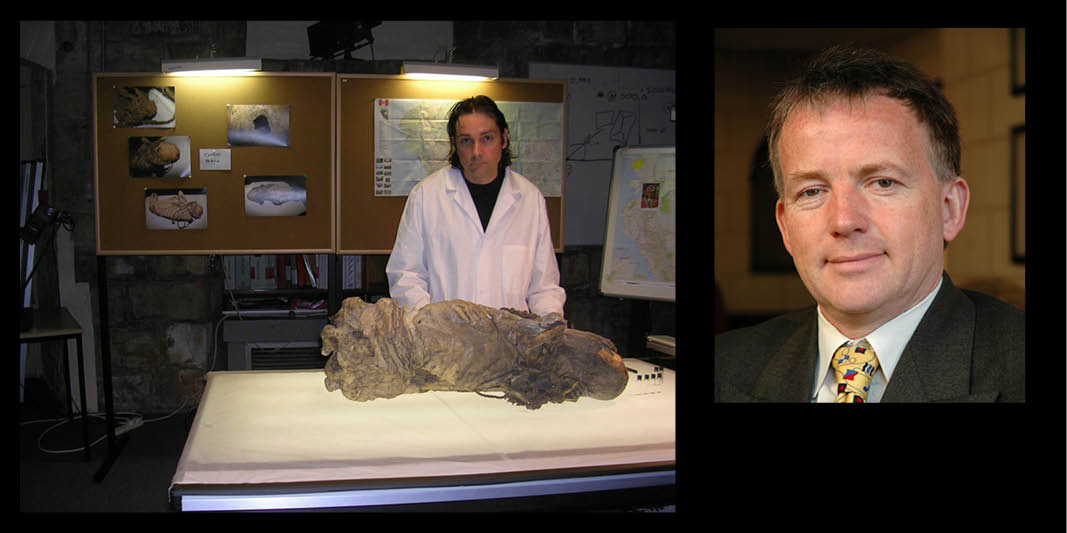
The 3,000 year-old Mummy Nesyamun: His life, work and recreating a vowel sound Dr Stephen Buckley, Archaeology and Professor David M Howard, Royal Holloway, University of London
Event details
This lecture is organised by the Forensic Team in the Department of Language and Linguistic Science and introduced by Professor Peter French
The sound of a 3,000 year old mummified individual has been accurately reproduced as a vowel-like sound based on measurements of the precise dimensions of his extant vocal tract following Computed Tomography (CT) scanning, enabling the creation of a 3-D printed vocal tract. By using the Vocal Tract Organ, which provides a user-controllable artificial larynx sound source, a vowel sound is synthesised which is compares with vowels from modern individuals. This work will be placed in the context of his daily life and work in the temple of Karnak.
Dr Stephen Buckley and Professor David M Howard FREng
Dr Stephen Buckley
Stephen is a Research Fellow in Bioarchaeology at the Universities of York, UK and Tübingen, Germany. Having studied ancient mummification over the last 25-30 years, his work has been published in the most prestigious academic journals and given national awards. His ongoing research with University of York colleague, Professor Joann Fletcher, overturning previous understanding of the zenith of the embalmers’ art, has been the subject of a BAFTA-winning TV programme ‘Mummifying Alan: Egypt’s Last Secret’.
Professor David M Howard FREng
David was a member of the Department of Electronic Engineering at the University of York for some 25 years where he gained a personal chair in Music Technology and became Head of Department. In 2017 he moved to Royal Holloway, University of London to start an Electronic Engineering Department from scratch, built on the principles of creativity having to be ‘up front’ to achieve excellent engineering solutions. He has worked on aspects of human voice production in speech and singing, and his contributions to our understanding of these areas have been widely published; he has frequently appeared in television and on radio.